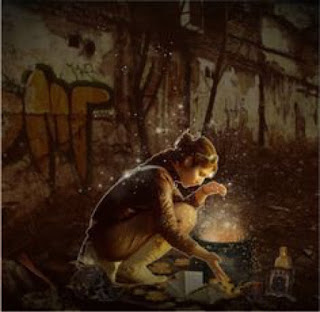We've reached that part whe most of the photographed work-in-progress images are pencil sketches, and probably don't show up too well on a screen. These are the last of the geomorphs I found in my pile of paperwork, so they are being posted for the purposes of completeness. This second "Edge of Town" is a general suburban sprawl. They call it a sleeper suburb, because most people spends their nights here in relative safety and quiet away from the rest of the city, while they spend their mornings communting to factories, skyscrapers and other workplaces in other parts of town. This is the home of the dwindling middle class, the lower level managers, the well paid tradesmen, the small business owners. It's a very vanilla part of town, nothing particularly good, and nothing particularly bad. It's just quiet... But underneath the quiet, who knows? The "CBD" is the commercial hub of the city, unlike the capital where the laws of the l













